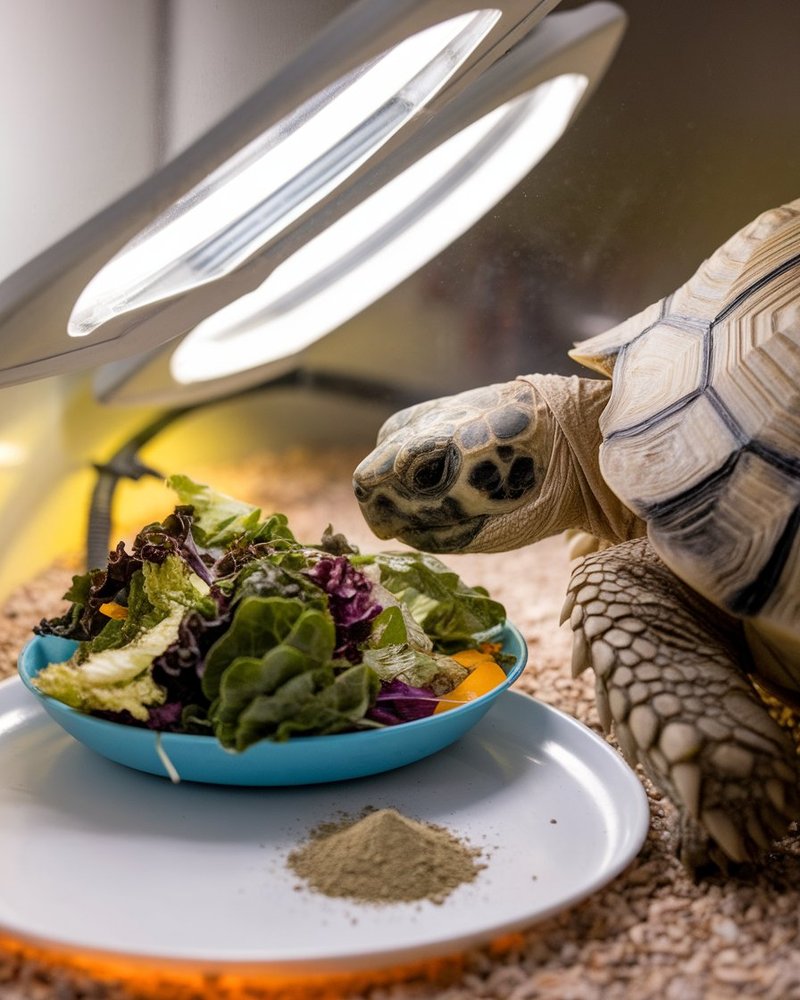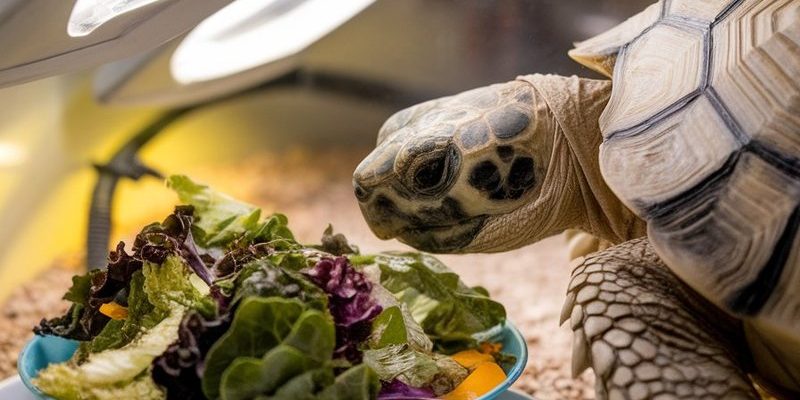
Feeding your marginated tortoise isn’t just about tossing in some lettuce and hoping for the best. It’s like preparing a balanced meal full of colors, textures, and flavors. From the right greens to occasional treats, understanding their dietary preferences and nutritional requirements is key. In this guide, we’ll explore everything you need to know about what to feed your marginated tortoise, how often to feed them, and tips to make mealtime enjoyable for both of you.
Understanding the Marginated Tortoise’s Diet
When it comes to the diet of a marginated tortoise, think of them as herbivores with a taste for variety. These tortoises naturally munch on a wide array of plants, grasses, and flowers in their native habitats. Their diet should mostly consist of high-fiber foods that promote healthy digestion. In simpler terms, they need that crunchy goodness to thrive.
Here are the key components of a marginated tortoise’s diet:
- Greens: Leafy greens like kale, collard greens, dandelion greens, and endive are the stars of the show. They’re packed with essential vitamins and minerals.
- Weeds and Flowers: These guys love to snack on dandelions, clover, and hibiscus flowers. Not only are they safe, but they also add a splash of color to the diet.
- Grasses: Grasses provide important fiber. Offer different types like timothy or meadow hay to keep things interesting.
- Occasional Treats: While the majority of their meals should be greens, they can enjoy fruits like strawberries or melons now and then—as a treat!
It’s all about balance! You want to create a colorful plate that mimics their natural diet.
Meal Frequency and Portion Sizes
Now that you know what’s on the menu, let’s talk about how often to feed your marginated tortoise. These little guys don’t need three square meals a day like you or me. In fact, feeding them every day can sometimes lead to overfeeding, which isn’t great for their health.
Most experts recommend feeding adult marginated tortoises every other day. This allows their digestive system to process the food properly without overwhelming them. Here’s a simple guideline to follow:
– Juveniles (up to 1 year): These young tortoises are growing fast, so they’ll need daily feedings. Offer a variety of greens and add some high-fiber options to support healthy growth.
– Adults (1 year and older): Feed every other day. Make sure they have unlimited access to hay or grass in their habitat to munch on as needed.
When it comes to portion sizes, it’s better to offer food that they can finish in about 30 minutes. If there are leftovers, it might be a sign that you’re giving too much.
Best Greens for Your Tortoise
So, what exactly should you be putting on your tortoise’s plate? Let’s break down some of the best greens to ensure they’re getting the nutrients they need.
1. Kale: Rich in calcium and vitamins A and C, kale is a fantastic staple. However, it’s a bit high in oxalates, so combine it with other greens for balance.
2. Dandelion Greens: These leafy delights are packed with nutrients and have a natural appeal. Your tortoise will likely love the taste!
3. Endive: This crunchy green is great for hydration and is easy for tortoises to digest.
4. Collard Greens: Full of fiber and vitamins, collard greens are another excellent option.
The key is to mix these greens to keep things fresh. Just like we enjoy variety in our meals, tortoises do too!
Hydration: The Importance of Water
While we often think of feeding a tortoise as providing solid food, hydration is super important, too. Tortoises get much of their moisture from the greens they eat, but you should provide fresh water daily as well.
Here’s how to ensure your tortoise stays hydrated:
– Water Bowl: Place a shallow water dish in their enclosure that’s easy for them to access. Make sure to change the water regularly to keep it fresh and clean.
– Soaking: On occasion, you can give your tortoise a gentle soak in lukewarm water for about 20–30 minutes. This helps with hydration and can aid digestion.
You might be wondering how to tell if your tortoise is well-hydrated. Look for signs like active behavior and healthy-looking skin. If they seem lethargic or their skin appears dry, it might be time to up the hydration game!
Handling Treats Wisely
Let’s face it, who doesn’t love a treat? While your marginated tortoise can snack on fruits, the key is moderation. These sweet bites should be offered sparingly to avoid any dietary imbalances.
Here are a few fruits that are safe for tortoises:
- Strawberries
- Melons
- Papaya
- Apples (without seeds)
When offering treats, keep them small and infrequent. Once a week is usually a good rule of thumb, and always make sure they’re fresh. You want to keep their diets balanced while still giving them something to look forward to!
Identifying and Addressing Common Issues
When it comes to feeding your tortoise, it’s important to keep an eye on their eating habits. If they start to lose interest in food or refuse to eat, it could be a sign of an underlying issue.
Common signs to watch for include:
– Refusal to Eat: If your tortoise suddenly stops eating, check for stressors in their environment. This could be temperature changes, new companions, or even a dirty habitat.
– Changes in Poop: Healthy tortoise droppings are solid and well-formed. If there’s a change in consistency or color, it’s worth investigating.
– Weight Loss: Monitor their weight regularly. If your tortoise is losing weight, consult a vet to rule out any health issues.
By keeping a watchful eye, you can catch potential problems early and ensure your tortoise stays happy and healthy.
Feeding your marginated tortoise is more than just a routine; it’s a way to ensure a long, healthy life for your shelled companion. By providing a balanced diet rich in greens, fruits, and occasional treats, you set the stage for their well-being.
Remember, variety is key! A colorful plate not only excites your tortoise but also enriches their diet. Don’t forget about hydration and watch for any changes in their behavior that could indicate a problem.
Honestly, taking the time to learn about what your tortoise needs will strengthen the bond between you both. So grab that fresh bunch of greens and get ready to serve up some delicious meals for your little friend! The joy of watching them munch with delight is totally worth the effort.

